Mastering the French Press: The Ultimate Guide to the Best Grind Size
The French press, also known as a press pot or plunger pot, is a beloved brewing method cherished for its simplicity and ability to produce a rich, full-bodied cup of coffee. Central to achieving the perfect brew is understanding and mastering the best grind for French press. This comprehensive guide delves into the intricacies of grind size, its impact on flavor extraction, and provides actionable insights to elevate your French press experience.
Understanding Grind Size and Its Importance
Grind size refers to the coarseness or fineness of coffee grounds, ranging from extra coarse (similar to peppercorns) to extra fine (resembling powdered sugar). The size of the grind significantly influences the rate of extraction-the process by which water dissolves the desirable flavors from coffee grounds.
-
Coarse Grinds: Larger particles that allow water to flow more freely, resulting in a slower extraction. Ideal for immersion methods like the French press.
-
Fine Grinds: Smaller particles that increase the surface area, leading to faster extraction. Suitable for methods like espresso, where water contact time is brief.
An appropriate grind size ensures balanced extraction, preventing under-extraction (sour, acidic flavors) or over-extraction (bitter, harsh flavors).

Optimal Grind Size for French Press
The French press is an immersion brewing method where coffee grounds steep in hot water before being separated by pressing a metal mesh plunger. This method benefits from a coarse grind size, typically around 800 microns. This coarser grind allows for a slower extraction, resulting in a full-bodied and flavorful cup.
According to Barista Hustle, a typical grind setting for a French press involves setting the burrs around 800 microns apart, which allows for proper extraction during the immersion process.
Factors Influencing Grind Size Selection
While a coarse grind is generally recommended for French press brewing, several factors can influence the optimal grind size:
-
Coffee Bean Origin and Roast Level: Lighter roasts may benefit from a slightly finer grind to enhance extraction, while darker roasts might require a coarser grind to prevent over-extraction.
-
Brew Ratio and Volume: Larger batches may need a coarser grind to maintain balanced extraction, whereas smaller batches can handle a slightly finer grind.
-
Water Temperature: Higher temperatures can accelerate extraction, potentially necessitating a coarser grind to avoid over-extraction.
-
Immersion Time: Longer steeping times typically require coarser grinds to prevent bitterness, while shorter times might benefit from finer grinds.
How to Grind Coffee for French Press
Achieving the ideal grind size requires the right equipment and technique:
-
Select a Quality Grinder: Burr grinders are preferred over blade grinders for their ability to produce uniform particle sizes. Consistency in grind size is crucial for even extraction.
-
Adjust Grind Settings: Set your grinder to a coarse setting. For example, the Comandante C40 Nitro Blade grinder recommends 25-30 clicks from the zero point for French press brewing.
-
Measure and Grind: Weigh your coffee beans to ensure consistency. Grind just before brewing to preserve freshness and flavor.

French Press Brewing Guide
To brew an exceptional cup using your French press, follow these steps:
-
Measure Coffee and Water: A common ratio is 1:15 (1 gram of coffee to 15 grams of water). Adjust according to taste preferences.
-
Heat Water: Bring water to a temperature between 195°F and 205°F (90°C - 96°C).
-
Add Coffee Grounds: Place coarsely ground coffee into the French press.
-
Pour Water: Saturate the coffee grounds evenly with hot water, ensuring all grounds are immersed.
-
Stir and Steep: After pouring, stir gently to break the crust and ensure even extraction. Let it steep for 4 minutes.
-
Plunge and Serve: Slowly press the plunger down, separating the grounds from the brewed coffee. Pour immediately to prevent over-extraction.
Common Mistakes and How to Avoid Them
-
Inconsistent Grind Size: Leads to uneven extraction. Use a burr grinder for uniformity.
-
Incorrect Water Temperature: Too hot or too cold water can affect extraction. Aim for 195°F - 205°F.
-
Oversteeping: Can result in bitterness. Stick to a 4-minute steep time.
-
Not Stirring: Failing to stir after pouring water can lead to uneven extraction. Always stir gently after adding water.
Frequently Asked Questions (FAQs)
Q1: What grind is best for French press?
A: A coarse grind is best for French press brewing. This grind size resembles sea salt and ensures optimal extraction without over-extraction, resulting in a rich, full-bodied cup.
Q2: How fine to grind coffee for French press?
A: For French press, avoid fine grinds. A coarse grind is recommended to prevent over-extraction and excessive sediment in your cup.
Q3: What grind to use for French press?
A: Use a coarse grind for French press brewing. This allows for proper extraction during the immersion process, yielding a flavorful and balanced cup.
Conclusion
Mastering the best grind for French press is pivotal for brewing a rich and balanced cup of coffee. By understanding the relationship between grind size and extraction, and by implementing precise techniques, you can elevate your coffee experience.
At Bazan Coffee, we offer a curated selection of specialty coffee beans, perfect for your French press endeavors. Explore our range and embark on a journey to coffee perfection.
Explore Our Specialty Coffee Selection: Bazan Coffee Products
Elevate Your Brew Today!




